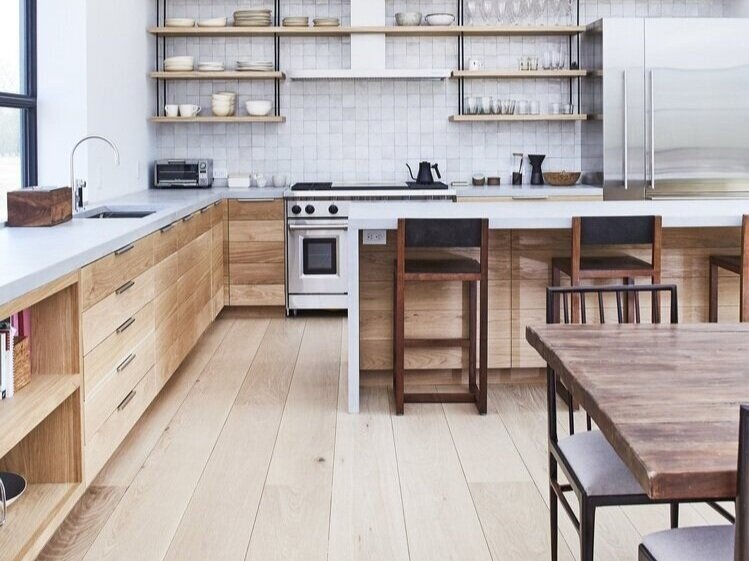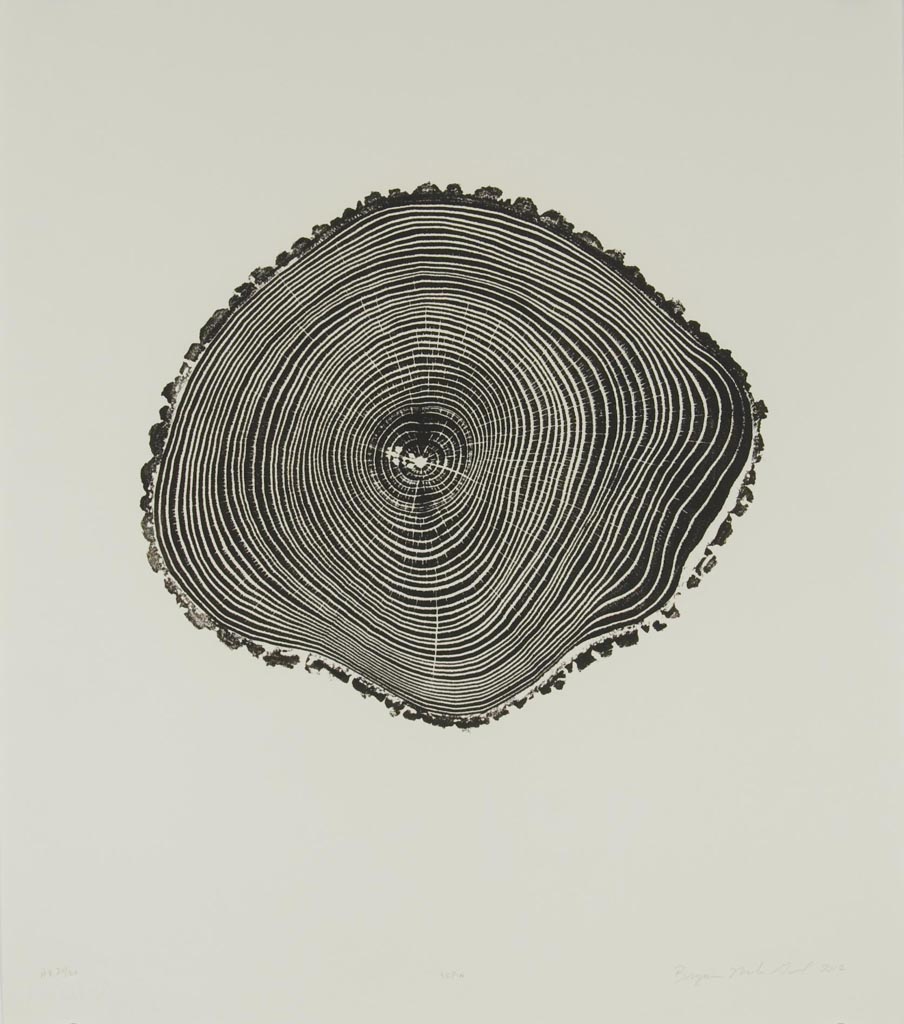‘The best art is simple, direct, and resonates without explanation. It is connected, simply, to the way things are.’ Curator and friend of the artist, Steven Holmes
Simple. Direct. Resonant. If there was ever an artist and craftsman whose work was powerful through its simplicity - it was prolific sculptor, painter, and printmaker Bryan Nash Gill (1961 - 2013).
For three days in April 2013, The Hudson Company was proud to collaborate with and host Bryan in our Brooklyn showroom, where he created the extraordinary ‘Ming’ duo-tone woodcut print. At sixteen feet in length, the ‘Ming’ became not only Bryan’s largest ever woodcut print, but also the last print he would make before his unexpected death in May of that year.
This unique collaboration was born after The Hudson Company acquired a hardwood beam originating from a temple from the Ming Dynasty of China (14th - 17th centuries). As long time admirers of Bryan’s work, we wondered what stories he might be able to draw out of such a venerable artifact; what history the grain and knots of the ancient beam could reveal?
With his signature passion for exploration, Bryan applied his creative process to the ‘Ming’ project with a childlike excitement. During those three days, Bryan described what drove him to continually experiment and develop his craft: ‘...it’s a process of discovery, a process of learning, a process of putting yourself on the edge and kind of having the courage to go forth and see what happens, and learn from the process.’
At the end of his three days of ‘discovery’ at The Hudson Company showroom, Bryan produced a large-scale print that is both beautiful and surprising. Far removed from its place and era and utility of origin, ‘The Ming’ shows us a new perspective on the patterns of life encapsulated in the lines and layers of wood. Like a massive fingerprint from a distant time and place, ‘The Ming,’ like all of Bryan’s woodcuts, draws viewers into the very heart of wood - past it’s surface and color and hardness - to the nucleus of it’s identity.
Steven Holmes describes the woodcuts of Bryan Nash Gill as a way to, ‘participate in historically anchored beauty,’ by understanding wood, ‘not as an object, but as a verb.’ Today, ‘The Ming’ hangs proudly in The Hudson Company showroom as a symbol of the new perspectives that can be gained from reimagining historical artifacts. It hangs as a tribute to our friend Bryan. It hangs as an example of beautiful craftsmanship and innovative vision. It hangs as a reminder of the resonance that comes from simple beauty found in the way things are.
Watch the video below to see Bryan at work on The Ming in The Hudson Company's Brooklyn Showroom, in April 2013.



















![Detail of Reclaimed Heart Pine [Chalk Finish] installed at new Whitney site.](https://images.squarespace-cdn.com/content/v1/544e3a5ce4b0117bc5e24e56/1430382380368-VV5HYF67OCBAKR02XMJI/image-asset.jpeg)










